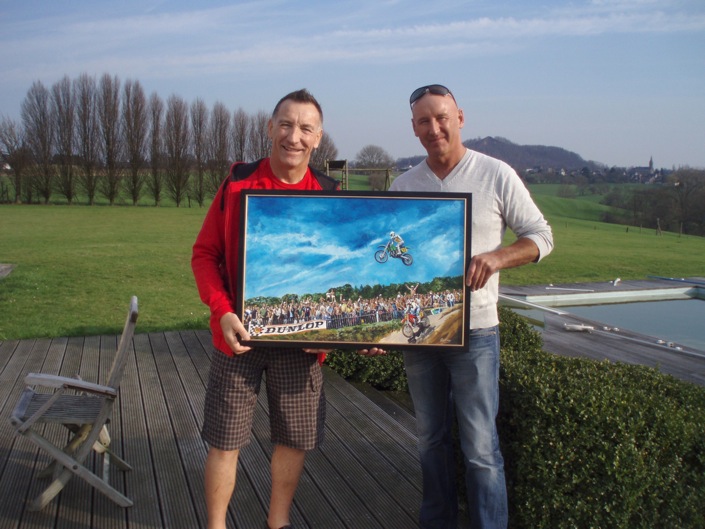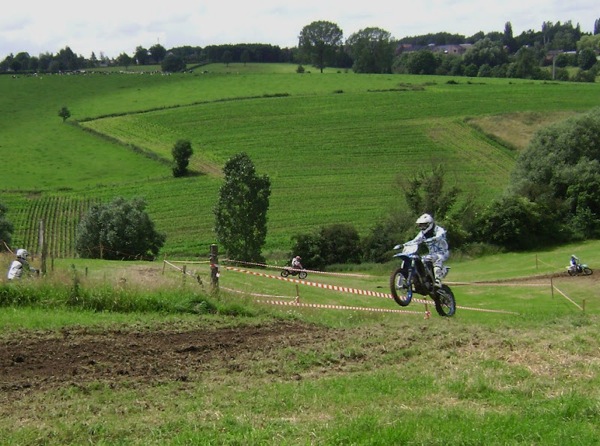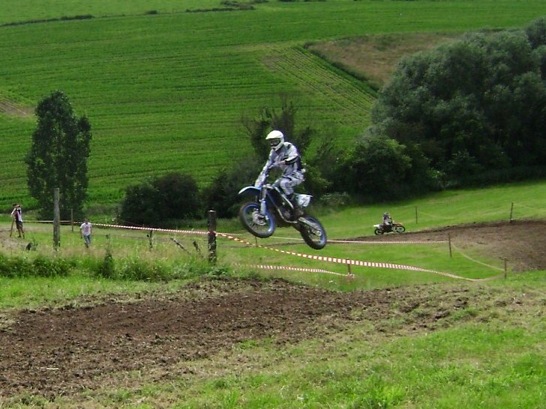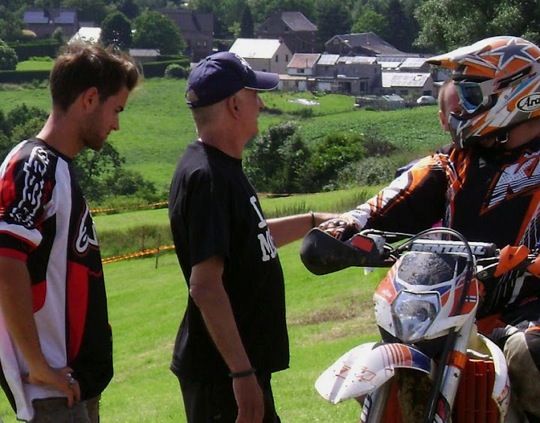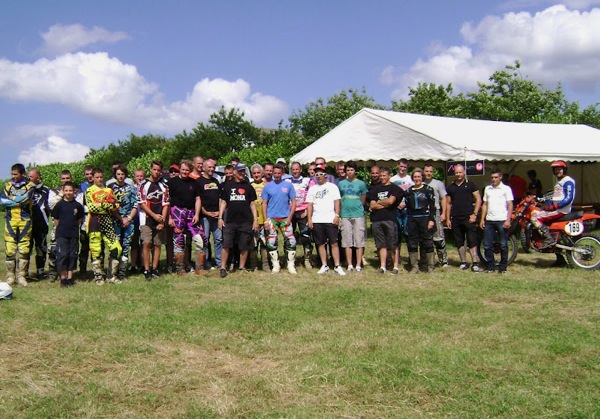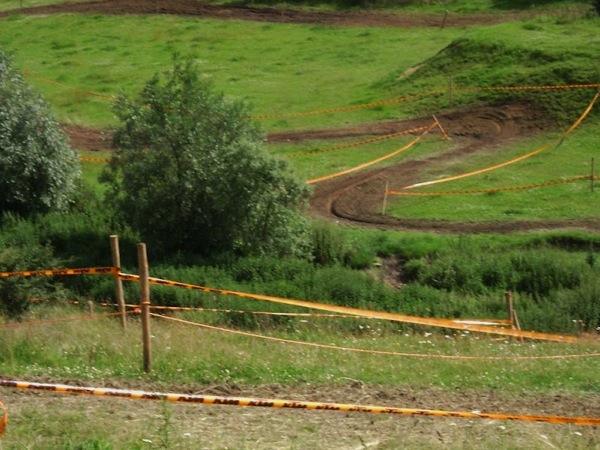Last updated on December 30, 2018
Words and photos suppled by Alan Bott
Before I go any further, I would like to introduce myself. My name is Alan Bott, and I am the owner of Pemberton Tyres in Wigan, Lancashire.
I have been involved in motorsport all of my life. I live for, and breathe, motorsport and have competed myself for a number of years – always giving 110 per cent in everything I have done.
It started when my dad and uncle raced karts in the late 1960s and early 1970s against people like future F1 champion Nigel Mansell. I had been dying to reach the age of eleven so I could get into a kart myself but my mum – eager to have her say – had other ideas and decided that it was too dangerous and I could have a bike instead.
It seemed like I had got the short straw, but that was far from it. We bought a damaged Suzuki TS90 trail bike from Slingers Motorcycles in Preston, took the lights off and off we went – week after week after week. I went from schoolboy competition to AMCA and then ACU.
When I got to 27, I decided to move into karting. I started out competing in 125 gearbox and then moved up to 250 national but there comes a time in your life when you want to try and give something back to the sport you have been involved with. I became part of the committee of Manchester and Buxton Kart Club but I soon realised that it was difficult to try and run a meeting and race at the same time without losing focus of what I was trying to do. It meant that my racing came to an end, for a little while at least.
I then came across Danny Tollett, who I know from Motocross, but who had started in Supermoto when he was with the Robinson team with Matt Winstanley and Chris Hodgson. Danny had approached me for some sponsorship and I wanted to improve customer awareness that we were selling motorcycle tyres, it seemed like it would be a good move. That was the start of my involvement in the other side of motorsport as I know how much it costs to compete, I sponsor people like Tony Lynch in the British Rallycross Championship and Christian Iddon in the Supersport class of British Superbikes, amongst others.
I went to watch Danny when he was practising with his Supermoto bike at my local track, Three Sisters in Wigan. I was so impressed with the whole package and even managed to borrow some gear so that I was able to try it out for myself. I was able to connect with the sport very quickly as I had experience of the tarmac side of racing from karting and the dirt side of things from Motocross. That started five years of backing it in and big jumps, but also a lot of pain and a lot of injury. It was a lot of fun at the same time, but after a few operations and collarbone and finger breaks, I decided it was time to go back to four wheels. That saw me switch to Superlite buggies, which race on the same tracks as the Supermoto riders.
That takes me to where I am now, and after 18 years I have gone back to my roots by returning to Motocross. That in turn led to me making a trip to see five-time World Motocross champion, Mr Georges John Jobe.
I was lucky enough, and honoured, to meet Georges Jobe two months ago when myself and motorsport artist Rob Kinsey went to Belgium to present him with a painting that I had commissioned of him jumping over Andre Malherbe at Hawkstone Park back in 1984. I’m sure that if you are a Motocross die-hard, you will have seen a poster of the image on a wall in a Motocross shop. Even by today’s standards, it remains the most awesome photo in Motocross history in my opinion.
While we were there, Georges told us about an event that he runs every year, which usually consists of three days of riding on a Friday, Saturday and Sunday. Our visit came just before Georges was going into hospital for two months of chemotherapy for leukaemia, and we were both touched when he told us that he planned to put the painting on his hospital room wall while he was undergoing his treatment.
Those two months passed, and suddenly out of the blue, I received an e-mail from Georges to tell me that he was having his event at his own track the following weekend. I’d bought a 250WRX to practice with as one of the things on my ‘to do list’ before I die is to go to the USA and race at Lake Elsinore. I’ve always been a huge fan of Steve McQueen and as he would say ‘You’ve got to do what you want to do’ and ‘I answer to nobody’ – so it’s a dream I want to fulfil. Even though I’d bought the bike, I’d only had a day out with Danny Tollett to see if I could remember how to ride the damn thing so it had been a good 18 years since I had really ridden in anger around a Motocross track.
Having received the e-mail from Georges, I had a plan to either head over to Belgium in my Sprinter van and find a Bed and Breakfast, or take my eleven ton race transporter – which usually houses the Superlite buggy I race in the Nora Sport Supermoto event and has living quarters in it. The funny thing is that the race transporter came out with a return cost of £90, while the Sprinter van was going to be £265, so the transporter was chosen for the trip. When I finished work on the Thursday at 7pm, I set off for Dover for the crossing to Dunkirk at 2am on the Friday. Rob had planned to make the trip with me again but his daughter had just got the keys for her new house and his job for the weekend was organising the removal team so he wasn’t able to join me. He really drew the short straw; gutted wasn’t the right word!
The truck isn’t the fastest thing on six wheels, but even though I hit the M1 and then M25 at very late hours, I couldn’t believe the amount of road works going on. The traffic was coming to a standstill, but the clock seemed to be going faster. With no time to spare for a fuel stop, I took the decision to get straight on the boat and get some fuel when I got off the boat at the other side.
I have been using the wagon for the last two years and never really had to use the state of art sat-nav system that I bought when I was kitting it out. This bad boy will play CDs and DVDs, has a rear view camera, the lot, but when it came to putting a post code in, I felt I should of gone to night school for a week to learn how to use it!
I tried my best and off I went, but wasn’t really feeling too confident as I thought I wasn’t going in the right direction. After half an hour of still not seeing a fuel station, my heart sank when I saw a sign for the Channel Tunnel and knew I’d been going completely the wrong way.
With a quick u-turn, I was dying to find a fuel station and somewhere to buy a bloody map, and I knew it was going to be at least half an hour before I got back to where I started. Having been on the road for an hour and a half after leaving the boat, the fuel gauge had never been so low – not even with the ignition turned off. The only spare diesel I had with me was for the generator and was in a five gallon drum. I had no pipe with me that was long enough to get to the tank under the truck, meaning the only way I could get fuel from one to the other was with a cup. However, it was a case of needs must and that was what I knew I had to do, although I didn’t want to pull off the motorway in case I couldn’t then get back on again.
I then came to a lay-by where luckily I saw an English trucker and I asked him where the nearest fuel station was. He replied that it was eight miles further on, so I headed off with a wing and prayer hoping that the truck didn’t run dry because I knew it would be a bitch to bleed.
There was some light at the end of the tunnel when the sign for the fuel station came up and I knew it was only minutes until I could get some fuel, something to drink and a bloody map, as the sat-nav would have been more use if it was giving me directions to the moon. Luckily the man behind the counter spoke good English so we talked through directions and I ordered a full tank of fuel. I also picked up a siphon pipe just in case I nearly ran dry again, and a map of Belgium to help when I crossed the border.
I knew Georges lived in a small town called Retinne, but with my luck, it was so small that it didn’t feature on the map I’d just bought. I did know it was near Liege, so the plan was to get to Liege and then work on the next problem, so I set off on an easy 150 mile drive ready to make enquiries. As I got closer, things fell into place as I started to remember some of the sights from my previous visit.
With the panic over fuel behind me, I was planning to get to Georges for dinner time, which would give me enough time to get settled down and unloaded so I could try and get a couple of sessions in and iron out any problems ahead of the weekend. The journey was going well, the CDs were playing strong, the sun was shining and the excitement was building with every mile. Firstly, because it would be nice to see Georges again and continue our conversations from my earlier visit, and secondly because I was interested to see what the circuit was like that a World Champion would practice on.
I remembered how passionately he spoke of the Motocross industry and of championships losing their way, and how disappointed he was to see that people were now buying rides with their chequebook instead of earning them through raw talent. With my background in organising karting events, I know only too well the strength of money when you walk around the pits and paddock. I’ve seen myself where money does the talking rather than the talent of the driver or rider.
I finally arrived at Georges’ home at around 1.30pm. It was deadly silent apart from the occasional thump of a hammer and the noise of KTM track tape blowing in the light breeze. There were a handful of bikes parked up near the marquee, where Georges’ son was serving refreshments. I said hello and asked if Georges was around, but I had just missed him as he had gone for a lie down after helping his small crew to mark the track out. So I went back to unload and prepare for my first ride round a proper Motocross track for 18 years. I was so excited, but also nervous at the same time.
Now there is green and there is green, but this place hadn’t seen a bike or a grass cutter for at least twelve months. The grass in places must have been two feet tall, so I wasn’t going to go too far off line in case I suddenly found a disused mine shaft or something. That’s probably me going over the top – sorry for the pun.
Even though it was very grassy, the fields and valley on what the track was set was totally natural and it made me remember the good old days of the schoolboy tracks I’d raced on in the 1970s. It also reminded me of the bigger tracks at places like Ripon, Thirsk, Farleigh Castle and Nantwich. It was old school and what grass roots racing is all about.
By the time I came off the circuit, Georges was there to greet me. His first words weren’t ‘How are you?’ but were instead ‘Well, what do you think?’. That sums him up in one go; passionate about doing a good job. In fact, he doesn’t try to go a good job, he sets out to do the best job. Everything he does or says is from the heart, and he does it all 110 per cent, which is why he is a five time World Champion. His commitment is second to none, even in the fragile condition he is in at the moment.
I had one more session and then called it a day, got cleaned up and had a beer with Georges for a short time. I could tell the preparation had taken a lot out of him, so we called an early night. I went to bed hoping that, even with the short notice to everyone about the event, that his hard work hadn’t been in vain and that there would be a better turn out for Saturday.
The next morning, the sun was out and the early birds were turning up and there were bikes on the track by 9.30am. With every session, the track was getting better and wider, with more grass being broken up by riders using different lines – the track was coming to its own. By dinner there were at least 60 riders riding round, living the dream of a World Champion and using his track to practice their craft for their next big race. It’s a bit like holy ground and even more so when I found out that in the 1980s, it was used for the Belgium championships. When I then found out that there had been two World Championship events there in the 1970s, it felt like Mecca. It couldn’t get any better.
I remembered I had camera equipment still fitted to my Superlite so I got up early and started to strip it off the buggy and place the wiring loom under the seat and tank and strapped the unit behind the front number plate. Then I taped the wire up my left arm and mounted the camera on my peak. If you go onto the TMX website then you should be able to see a few laps around the track.
I had a meal with Georges and his family and friends on the Saturday night. It was a privilege and an honour, and I hope it’s a friendship that will grow and grow with the strength like Georges is showing in his heart and body with his determination not to lose his next race – the fight for life against his illness.
Sunday afternoon came too fast and it was time to bid a fond farewell. Wagon packed I took five to have a few moments to cement a few memories of the weekend which had me reminiscing about my old motocross days. As I was sitting my thoughts went to a bottle of champagne which had been maturing in the fridge waiting to be celebrated on a momentous occasion namely my first win in my superlite final. I decided to make a discreet exit as I was finding it hard to say my goodbyes. With my emotions running high and a tear in my eye I left leaving behind the enjoyment of being back on my bike, new friends and a warm loving family who had welcomed me into their home and a bottle of champagne left on Georges patio with a note saying this was for my first win but “you’re the winner my friend”.
The bottom line is, this write up is for the old school boys who rode in the 60s, 70s, 80s and 90s. It’s an open invite by Georges to turn the clocks back and remember what the tracks were like, to remember the camaraderie of people and to socialise, and more importantly have fun. The cost for this experience is 25 Euro a day, and I believe there is no charge for camping. If you have a classic, a twin shock, an enduro or even a newish bike like me, the door is always open.
Just like the film On Any Sunday, ‘live the dream’.

